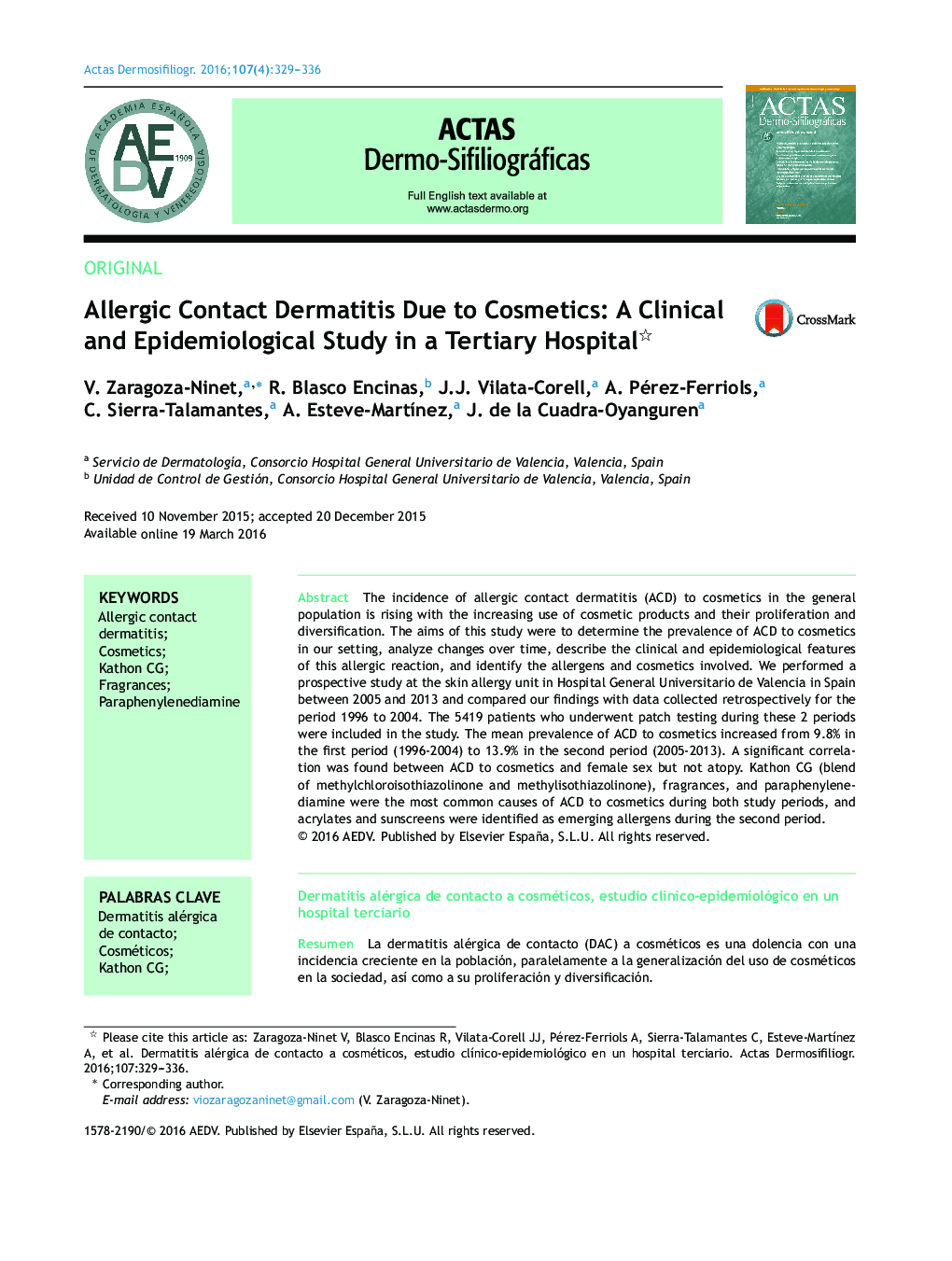| کد مقاله | کد نشریه | سال انتشار | مقاله انگلیسی | نسخه تمام متن |
|---|---|---|---|---|
| 3182130 | 1200640 | 2016 | 8 صفحه PDF | دانلود رایگان |
The incidence of allergic contact dermatitis (ACD) to cosmetics in the general population is rising with the increasing use of cosmetic products and their proliferation and diversification. The aims of this study were to determine the prevalence of ACD to cosmetics in our setting, analyze changes over time, describe the clinical and epidemiological features of this allergic reaction, and identify the allergens and cosmetics involved. We performed a prospective study at the skin allergy unit in Hospital General Universitario de Valencia in Spain between 2005 and 2013 and compared our findings with data collected retrospectively for the period 1996 to 2004. The 5419 patients who underwent patch testing during these 2 periods were included in the study. The mean prevalence of ACD to cosmetics increased from 9.8% in the first period (1996-2004) to 13.9% in the second period (2005-2013). A significant correlation was found between ACD to cosmetics and female sex but not atopy. Kathon CG (blend of methylchloroisothiazolinone and methylisothiazolinone), fragrances, and paraphenylenediamine were the most common causes of ACD to cosmetics during both study periods, and acrylates and sunscreens were identified as emerging allergens during the second period.
ResumenLa dermatitis alérgica de contacto (DAC) a cosméticos es una dolencia con una incidencia creciente en la población, paralelamente a la generalización del uso de cosméticos en la sociedad, así como a su proliferación y diversificación.El objetivo del estudio es determinar la prevalencia de DAC a cosméticos en nuestro medio, analizar su evolución temporal y sus características clínico-epidemiológicas, así como definir los alérgenos y los cosméticos implicados.Se ha realizado un estudio prospectivo durante los años 2005-2013 en la Unidad de Alergia Cutánea del Hospital General Universitario de Valencia, y se ha comparado de forma retrospectiva con el periodo previo de 1996-2004.Se ha incluido a 5.419 pacientes estudiados con pruebas epicutáneas durante el periodo total del estudio. La prevalencia media de DAC a cosméticos ha aumentado de 9,8% en el periodo 1996-2004 a 13,9% en el periodo 2005-2013. La DAC a cosméticos se ha correlacionado con el sexo femenino, pero no con la atopia. El kathon CG (mezcla de metilcloroisotiazolinona y metilisotiazolinona), las fragancias y la parafenilendiamina (PPDA) se han mantenido como las causas más frecuentes, aunque en los últimos años los acrilatos y los filtros solares han sido alérgenos emergentes.
Journal: Actas Dermo-Sifiliográficas (English Edition) - Volume 107, Issue 4, May 2016, Pages 329–336
